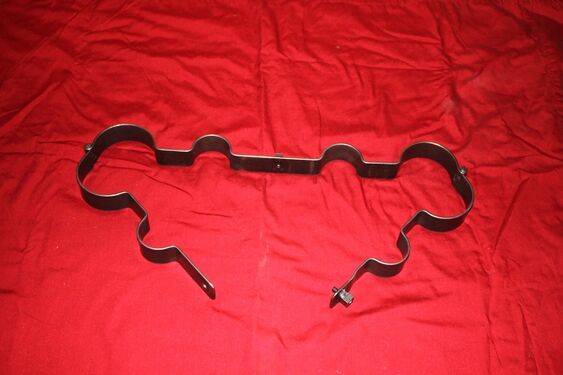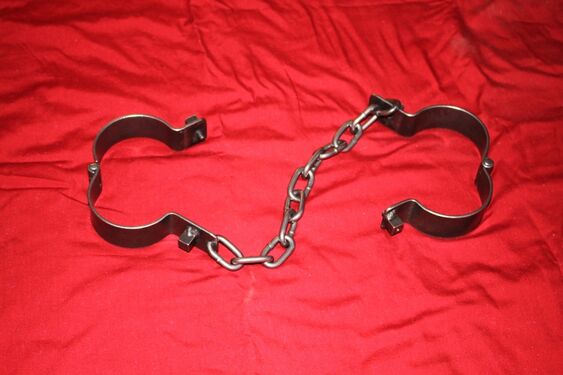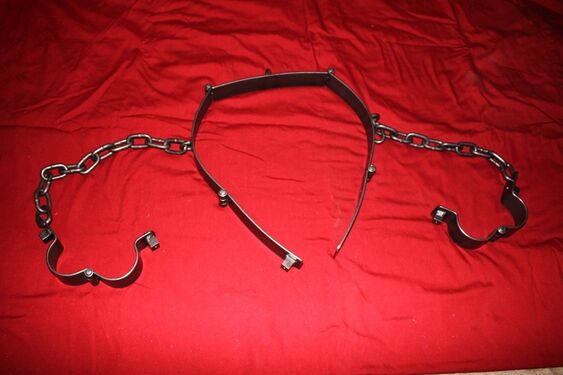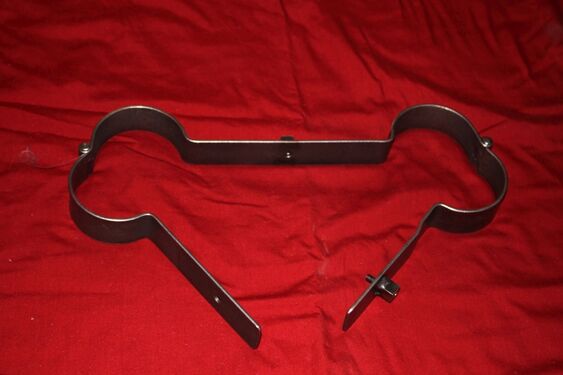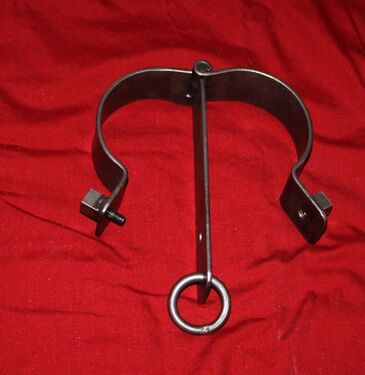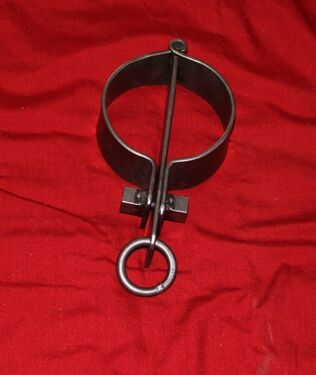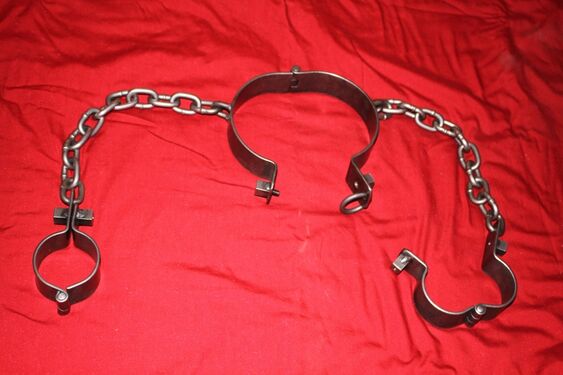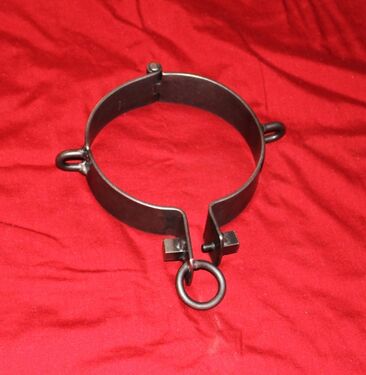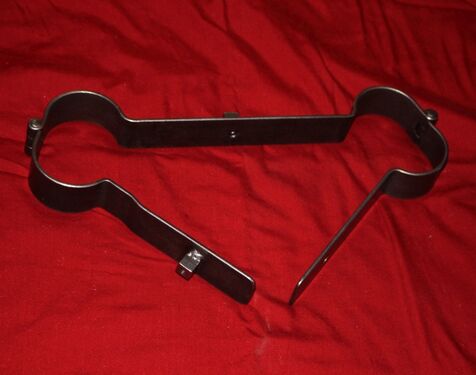Steel bondage
Steel bondage involves metal restraints, usually made of iron or steel, such as handcuffs or shackles. Due to the unforgiving nature of metal versus flesh, steel bondage has its own set of safety issues.
Steel bondage appeals to people for a number of reasons: there is the contrast between the soft flesh and hard steel, steel bondage has a feeling of inescapability about it, it is also quick to apply and requires little forethought or planning.
A few simple rules:
- Always use good quality handcuffs with a double lock mechanism AND USE IT!
- Don't make the cuffs too tight. Handcuffs don't need to be tight to be secure.
- Never use steel cuffs for suspension or make your captive lie on them. This can cause serious nerve damage.
- Be very careful with leg irons. If they are too tight, the captive won't be able to walk, and the pressure could damage the Achilles tendons or bruise the ankles. Leg irons over boots are best if the bound person will have to move around in them.
- Always keep a spare key at hand.
Rigid Irons
Rigid irons are a form of restraint for the limbs and/or neck whereby the restrained limbs are held at a fixed distance from each other. The restraints are typically made from steel strips bent and hinged at each end to secure the wrist or ankle, then locked together in the middle by a bolt requiring an allen key to unscrew.
Various configurations are available. Common variants are;
- Wrist to wrist.
- Ankle to ankle.
- Wrist to neck to wrist (same configuration as a pillory).
- Ankle to neck (via collar and short chain) to ankle.
- Ankle to wrist to wrist to ankle (same configuration as stocks).
- Neck to wrist to wrist (also called a Shrew's fiddle).
Because of the immovability of the restraint, rigid cuffs can be uncomfortable if worn for any length of time. This seems to be a particular problem with ankles. As a result, many manufacturers will produce designs which can be worn over boots to alleviate this probem.
Most restraints available are generally based on pre-19th century designs. However, there are a small number of manufacturers providing modern, highly engineered, versions (see Martin's Ridgid cuffs in the BDSM equipment suppliers article.
- Related elbow restraint articles
- Steel bondage restraints (photos by Robin Roberts)
External links
The Ten Commandments of Steel Bondageby Harold Cox and David Stein (1982) ( X Site down 09/20 R/ )
- (see Ten Commandments of Steel Bondage for archived copy)
- LOCKED-SHUT: 10 Questions for Steel Bondage Scenes by Tanos (2004)
Chat rooms • What links here • Copyright info • Contact information • Category:Root
